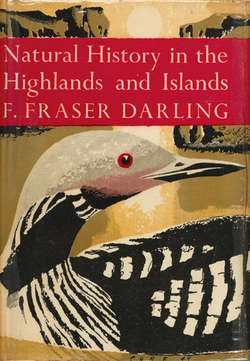Читать книгу Natural History in the Highlands and Islands - F. Darling Fraser - Страница 6
EDITORS’ PREFACE
ОглавлениеFOR MANY years Dr. F. Fraser Darling has found his field of work in the Highlands and Islands of Scotland. One of his pioneer researches was into the social behaviour of a herd of red deer, in an area of Wester Ross dominated by the massif of An Teallach. In 1936 he began the first of two seasons’ work on Priest Island of the Summer Isles, studying the social structure of gull colonies and of small flocks of grey lag geese and other gregarious birds. It was from this work that Dr. Darling was led to enunciate his theory connecting the size of a social group of gregarious animals, with its breeding-time, and breeding-success. Statistical analysis and further observation by other workers have confirmed this theory and shown it to be of wide biological importance. Darling then made protracted autumn and winter visits to Lunga of the Treshnish Isles, and to North Rona, in order to study a further type of animal sociality, that of the Atlantic grey seal, an animal of whose life history we knew surprisingly little. He also worked his small farm on Tanera in the Summer Isles in such fashion as to show that it was possible and reasonable to raise considerably the stock-carrying capacity of the West Highlands and to grow a large amount of human food under crofting conditions.
Fraser Darling is a born naturalist, was brought up to farming, and became a scientist as thoroughly and quickly as academic discipline permitted. His first researches (at the Institute of Animal Genetics, Edinburgh University) were on the Scottish Mountain Blackface breed of sheep. He combines the qualities of a trained biologist and practical farmer with those of a sensitive field observer. As a humanist he is considering the Highland problem with none of the peculiar obsessions with which it has so often been approached: some Highland countrymen believe only in sport, or stalking, or sheep: others believe that no problem is more important than crofting, or water power, or the tourist industry, or the collecting of rare alpine plants. Fraser Darling’s sympathies are with all the interesting problems of living things in the Highlands, not least with the human species which—in this wild part of Britain where man is in such close contact with the natural physical environment—must be regarded in relation to the others. It is in this spirit that he is interpreting his present work as Director of the West Highland Survey.
In this book, which is the first effort, so far as we are aware, to give a picture of Highland natural history as a whole, Dr. Darling has, naturally, expanded on those subjects with which he is most familiar—the life histories of seals, deer and sea-birds, and the ecology of grazing and regeneration of forest growth. Nevertheless, he has a general view, derived from a wide and mature experience, tempered with homely wisdom, and illuminated by his genuine love for the Highlands. There is, in this book, no aura of bogus romance; there are no purple passages or sporting reminiscences: instead, he has given us something of the real essence of Scotland’s land and sea.
THE EDITORS
Every care has been taken by the Editors to ensure the scientific accuracy of factual statements in these volumes, but the sole responsibility for the interpretation of facts rests with the Authors
